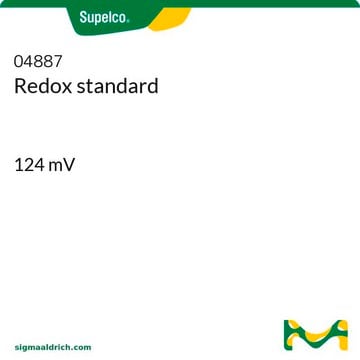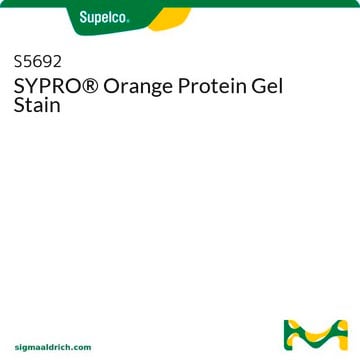Unfortunately, the stability of this product in solution has not been determined.
Kluczowe dokumenty
10417
8-Anilino-1-naphthalenesulfonic acid ammonium salt
for fluorescence, ≥97.0% (HPLC)
Synonim(y):
1,8-ANS NH4, ANSA, Ammonium 8-anilino-1-naphthalenesulfonate, N-Phenyl peri acid
Wybierz wielkość
268,00 zł
Wybierz wielkość
About This Item
268,00 zł
Polecane produkty
klasa czystości
for fluorescence
Poziom jakości
Próba
≥97.0% (HPLC)
Formularz
solid
strata
≤2.5% loss on drying
mp
245-253 °C
rozpuszczalność
H2O: 0.1 g/5mL, clear to very slightly hazy (hot)
NaOH: 1 N
H2O: soluble
acetone: soluble
methanol: soluble
fluorescencja
λex 388 nm; λem 470 nm in 0.1 M Tris, 0.2 M KCl, pH 9.0, BSA
przydatność
suitable for fluorescence
ciąg SMILES
N.OS(=O)(=O)c1cccc2cccc(Nc3ccccc3)c12
InChI
1S/C16H13NO3S.H3N/c18-21(19,20)15-11-5-7-12-6-4-10-14(16(12)15)17-13-8-2-1-3-9-13;/h1-11,17H,(H,18,19,20);1H3
Klucz InChI
IPBNQYLKHUNLQE-UHFFFAOYSA-N
Szukasz podobnych produktów? Odwiedź Przewodnik dotyczący porównywania produktów
Zastosowanie
Kod klasy składowania
11 - Combustible Solids
Klasa zagrożenia wodnego (WGK)
WGK 3
Temperatura zapłonu (°F)
Not applicable
Temperatura zapłonu (°C)
Not applicable
Środki ochrony indywidualnej
dust mask type N95 (US), Eyeshields, Gloves
Wybierz jedną z najnowszych wersji:
Masz już ten produkt?
Dokumenty związane z niedawno zakupionymi produktami zostały zamieszczone w Bibliotece dokumentów.
Klienci oglądali również te produkty
Produkty
Nitric oxide (NO) as a signal transporter in neurons, endothelial cells and in the immune system.
-
How long does 8-Anilino-1-naphthalenesulfonic acid ammonium salt (product 10417-5G-F) remain stable after being dissolved in water, and at what temperature should this solution be stored?
1 answer-
Helpful?
-
Active Filters
Nasz zespół naukowców ma doświadczenie we wszystkich obszarach badań, w tym w naukach przyrodniczych, materiałoznawstwie, syntezie chemicznej, chromatografii, analityce i wielu innych dziedzinach.
Skontaktuj się z zespołem ds. pomocy technicznej











